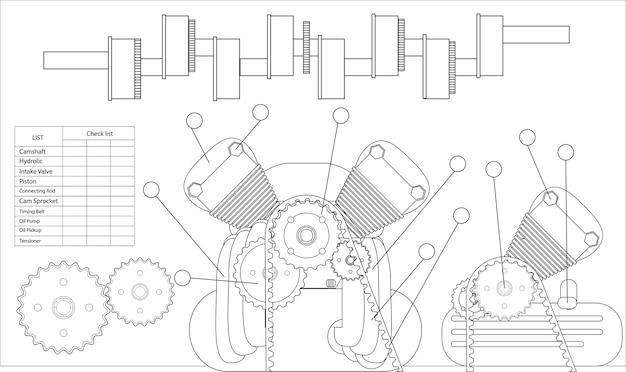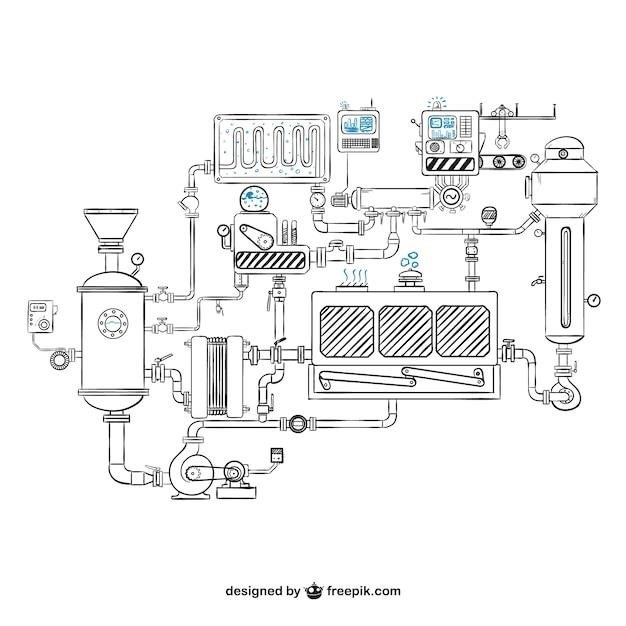Yamaha Outboard Wiring Diagram PDF⁚ A Comprehensive Guide
This guide explores Yamaha outboard wiring diagrams, crucial for troubleshooting, maintenance, and repairs. Understanding color codes, locations, and online resources ensures safe and effective electrical system management for your Yamaha outboard motor. Consult official Yamaha resources for your specific model and serial number.
Understanding Yamaha Outboard Wiring Diagrams
Yamaha outboard wiring diagrams provide a visual roadmap of your motor’s electrical system. These diagrams illustrate the intricate network of wires, connections, components, and color codes, essential for troubleshooting, repairs, and installations. Understanding these diagrams empowers boat owners to diagnose electrical issues, trace wires, and identify faulty components. The diagrams typically depict the connections between the battery, starter, ignition system, charging system, various sensors, and other electrical accessories.
Color codes play a vital role in deciphering wiring diagrams. Yamaha utilizes a standard color-coding system, where each wire’s color signifies its function. For instance, red often represents positive (+) power, black indicates ground (-), and other colors denote specific circuits like ignition, gauges, or lighting. Consulting the color code legend within the diagram is crucial for accurate interpretation.
Furthermore, the diagrams often include symbols representing various components, such as fuses, relays, switches, and connectors. Familiarizing yourself with these symbols simplifies navigation and comprehension of the wiring schematic. Wiring diagrams can vary in complexity depending on the outboard model and year. Therefore, it’s crucial to use the correct diagram corresponding to your specific motor to avoid misinterpretations and potential damage. Accessing the appropriate Yamaha outboard wiring diagram equips you with the knowledge to maintain and repair your motor’s electrical system effectively.
Locating Your Outboard Motor Serial Number
Your Yamaha outboard motor’s serial number is a crucial identifier for accessing the correct wiring diagrams and other technical information. This unique number acts like a fingerprint for your specific motor, differentiating it from others of the same model. Locating this number is typically straightforward, usually found on a label affixed to the outboard’s clamp bracket. The clamp bracket is the mounting point that secures the motor to the transom of your boat. The label containing the serial number is often located on the port side (left side when facing the front of the motor) of this bracket.
The serial number is typically stamped or etched onto the label, ensuring its permanence. It may be presented as a combination of letters and numbers, varying in format depending on the model and year. Once you’ve located the label, carefully record the complete serial number. This information is essential when searching for wiring diagrams, as using the wrong diagram can lead to inaccuracies and potential issues during repairs or troubleshooting. Yamaha’s official resources, such as their website or authorized dealers, utilize the serial number to pinpoint the exact documentation for your specific motor.
Keeping a record of your outboard’s serial number in a safe and accessible place is highly recommended. This ensures you have the information readily available when needed for maintenance, repairs, or ordering parts. Properly identifying your motor through its serial number is the first step in ensuring you access the correct wiring diagrams and other technical resources for effective maintenance and troubleshooting.
Yamaha Outboard Wiring Color Codes
Understanding Yamaha outboard wiring color codes is essential for anyone working on their boat’s electrical system. These codes provide a standardized language for identifying the function of each wire, simplifying troubleshooting and repairs. While general color codes exist, consulting your specific outboard model’s wiring diagram is crucial, as variations can occur. Common Yamaha color codes include red for positive (+) battery connections, black for negative (-) battery connections, and grey for the tachometer signal.
Other colors, such as brown, green, blue, pink, and white, represent various functions within the outboard’s electrical system; These can include starter circuits, ignition systems, lighting, and various gauges. Misinterpreting these color codes can lead to incorrect connections and potential damage to your outboard’s electrical components; Therefore, always double-check the wiring diagram specific to your model and serial number before making any connections or disconnections.
Online resources, such as Crowley Marine, often provide general Yamaha wiring color code information. However, these should be used as a supplement, not a replacement, for the official Yamaha wiring diagram for your specific outboard. Accurate interpretation of these color codes is fundamental for safe and effective electrical work, ensuring the proper functioning of your Yamaha outboard motor.

Common Yamaha Outboard Wiring Diagram Resources
Locating a reliable Yamaha outboard wiring diagram is crucial for any electrical work. Official Yamaha resources, such as their website and authorized dealers, offer the most accurate and up-to-date diagrams specific to your model and serial number. These diagrams are essential for proper troubleshooting, maintenance, and repairs, ensuring the safety and functionality of your outboard’s electrical system. Third-party websites like Crowley Marine can also offer helpful information and sometimes provide access to diagrams, but these should always be verified against official Yamaha sources.
Online forums and boating communities can be valuable resources for finding wiring diagram information and troubleshooting tips. However, exercise caution when using information from these sources, as accuracy can vary. Always cross-reference information with official Yamaha documentation. Some online marketplaces may offer downloadable manuals and diagrams, but ensure they are legitimate and compatible with your specific outboard model. Using an incorrect diagram can lead to costly mistakes and potentially damage your outboard’s electrical components.
Remember to record your outboard’s model number and serial number, as this information is essential for locating the correct wiring diagram. Having a readily accessible and accurate wiring diagram is an indispensable tool for any Yamaha outboard owner undertaking electrical work.
Wiring Diagrams for Specific Yamaha Outboard Models (e.g., F150, F250)

Yamaha outboard wiring diagrams are model-specific, meaning a diagram for an F150 will differ from an F250. These differences reflect variations in features, components, and wiring configurations between models. Using the incorrect diagram can lead to misdiagnosis, improper repairs, and potential damage to your outboard’s electrical system. Therefore, it’s paramount to locate a diagram that precisely matches your outboard’s model number and, ideally, its serial number as well.
Official Yamaha resources, such as their website and authorized dealerships, are the best sources for finding accurate and up-to-date wiring diagrams for specific models like the F150 and F250. These diagrams will provide detailed schematics of the electrical system, including color codes, connector locations, and component identification. While third-party websites and forums may offer wiring diagrams, verifying their accuracy against official Yamaha documentation is crucial.
When searching for a diagram, be sure to specify the exact model number, including any letters or suffixes, to ensure you find the correct information. Having a model-specific wiring diagram is invaluable for troubleshooting electrical issues, performing maintenance, and undertaking repairs on your Yamaha outboard. It allows you to trace circuits, identify components, and understand the complex interconnections within your outboard’s electrical system.
Connecting Yamaha Outboards to NMEA 2000 Networks
Integrating your Yamaha outboard with an NMEA 2000 network unlocks advanced functionalities like data sharing between onboard electronics. This allows your chartplotter, fishfinder, and other devices to receive vital engine data, including RPM, fuel consumption, temperature, and more. Connecting your Yamaha outboard requires a compatible NMEA 2000 starter kit and adherence to specific wiring instructions.
Refer to your Yamaha outboard’s wiring diagram and the NMEA 2000 installation manual for precise guidance on the connection process. This documentation will detail the necessary cables, connectors, and network configuration. Typically, the connection involves linking the outboard’s NMEA 2000 port to the network backbone using a T-connector. Ensure correct termination of the network and proper power supply to the NMEA 2000 network.
After connecting the physical network, configuring the devices for communication is crucial. This may involve setting device addresses and configuring data transmission parameters within your chartplotter or other display units. Consult the manuals for your specific electronic devices for detailed instructions on NMEA 2000 setup and configuration. Proper connection and configuration enable seamless data exchange, enhancing your boating experience with comprehensive engine information at your fingertips.
Troubleshooting Yamaha Outboard Wiring Issues
Electrical problems in your Yamaha outboard can be frustrating, but a systematic approach using the wiring diagram can often pinpoint the culprit. Start by identifying the specific symptom⁚ Is the starter not engaging? Are gauges malfunctioning? Is there no spark? Once you’ve isolated the issue, consult your Yamaha outboard wiring diagram to trace the relevant circuits.
Check for blown fuses or tripped circuit breakers first. Using a multimeter, test for continuity and voltage along the suspected circuit paths. Compare your readings to the values specified in the wiring diagram. Look for corroded connections, damaged wires, or loose terminals. Pay close attention to areas exposed to moisture, as corrosion is a common cause of electrical issues in marine environments.
If you identify a faulty component, like a switch, relay, or sensor, replace it with a genuine Yamaha part. If the problem persists after checking these common issues, consult a qualified Yamaha outboard technician. They have the expertise and specialized tools to diagnose more complex electrical problems. Remember to always disconnect the battery before working on any electrical components to prevent shocks and further damage.
Yamaha Outboard Tachometer Wiring
Proper tachometer function is crucial for monitoring engine RPM and ensuring optimal performance. Your Yamaha outboard wiring diagram provides the specific wiring information for your tachometer. Locate the tachometer signal wire on your outboard, typically identified in the diagram. This signal wire sends pulses to the tachometer, which translates them into RPM readings.
Connect the signal wire to the corresponding terminal on the back of your tachometer. Ensure a secure connection to avoid intermittent readings. You’ll also need to connect the tachometer’s power and ground wires. The wiring diagram will specify the correct color codes and locations for these connections. Some tachometers may require additional connections for lighting or other features. Refer to your tachometer’s manual for specific instructions.
If your tachometer isn’t working correctly after wiring, double-check all connections and consult the wiring diagram. A common issue is a loose or corroded connection. If the problem persists, test the signal wire with a multimeter to ensure it’s sending pulses. If the signal is weak or absent, there might be a problem with the sending unit in the outboard. In such cases, consult a qualified Yamaha technician for further diagnosis and repair.
Utilizing Yamaha Outboard Wiring Diagrams for Maintenance and Repair
Yamaha outboard wiring diagrams are indispensable tools for effective maintenance and repair. When troubleshooting electrical issues, the diagram helps pinpoint the source of the problem by tracing the circuits. For example, if your navigation lights aren’t working, the diagram will show the path of the wiring from the battery to the lights, allowing you to check for breaks, shorts, or corroded connections along the way.
During maintenance, the diagram assists in identifying components and their connections. When replacing a faulty part, the diagram ensures correct wiring, preventing damage to the new component and the outboard’s electrical system. For instance, when installing a new bilge pump, the diagram will specify the correct wiring for the power and ground connections, as well as the float switch.
Furthermore, wiring diagrams are invaluable when adding accessories or upgrading existing systems. Whether installing a new fish finder or adding additional lighting, the diagram provides the necessary information for proper integration with the outboard’s electrical system. This ensures the new components are wired correctly and don’t overload existing circuits. Always consult the appropriate Yamaha outboard wiring diagram for your specific model and year.
Safety Precautions When Working with Yamaha Outboard Wiring
Safety is paramount when working with any electrical system, including your Yamaha outboard. Before beginning any work, disconnect the battery’s negative terminal to prevent accidental shocks and short circuits. This crucial first step eliminates the risk of electrical flow while you work.
Use insulated tools to prevent contact with live wires, even with the battery disconnected. Inspect the wiring for any signs of damage, such as fraying, cracks, or corrosion. Replace any damaged wiring immediately to prevent potential hazards. Never attempt to repair damaged wiring with electrical tape; always replace the entire section.
When connecting or disconnecting wires, ensure proper connections to prevent overheating and potential fires. Consult your Yamaha outboard wiring diagram to confirm the correct placement of each wire. Avoid making modifications to the original wiring unless absolutely necessary, and always consult a qualified marine technician if you are unsure about any aspect of the work.
Finally, work in a well-ventilated area, especially when dealing with batteries, to prevent the buildup of potentially explosive gases. By adhering to these safety precautions, you can minimize the risks associated with working on your Yamaha outboard’s electrical system.
Where to Find Yamaha Outboard Wiring Diagram PDFs Online
Locating reliable Yamaha outboard wiring diagram PDFs requires careful consideration of sources; Official Yamaha websites, often through their parts catalogs or service manuals sections, are the most trustworthy resource. These diagrams are model-specific and ensure accuracy, reflecting the exact configuration of your outboard. Beware of unofficial sources, as inaccuracies can lead to misdiagnosis and potentially damage your outboard’s electrical system.
Reputable marine parts retailers, like Crowley Marine, sometimes offer wiring diagrams alongside parts listings. These can be helpful, but always cross-reference with official Yamaha documentation to confirm accuracy. Online forums and communities dedicated to boating and Yamaha outboards can also be valuable resources, with experienced users often sharing helpful information and links. However, exercise caution and verify any information found on forums with official sources.
Always prioritize safety and accuracy when working with electrical systems. Using an incorrect wiring diagram can lead to serious issues. When in doubt, consult a qualified Yamaha marine technician for assistance. They have access to the most up-to-date and accurate information and can provide expert guidance for your specific outboard model.



